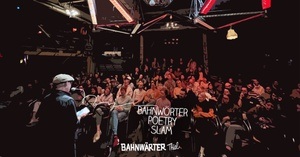Vortrag // Astrit Schmidt-Burkhardt, Salzburg: „Wir mögen keine Stillleben, eine grafische Darstellung sagt uns mehr.“ Otto Neurath und Gerd Arntz in bildaufklärerischer Mission
In the organizer's words:
After the First World War, the young Soviet Union was the "most fascinating country" (Stefan Zweig) for many intellectuals and artists - regardless of their political persuasion: on the positive side as a role model worthy of imitation, on the negative side as a deterrent example. The enormous attraction that the Bolshevik grand experiment exerted on left-leaning people in Western Europe was facilitated, if not encouraged, by the physical distance from the actual events and their consequences. Otto Neurath and Gerd Arntz are exemplary of that small group of intellectuals and image workers who did not simply idealize from afar, but instead participated in the construction of a socialist model of society as an experimental arrangement. Image statistics was their tool of choice.
PD Dr. Astrit Schmidt-Burkhardt is a habilitated image and art historian. She teaches at the Free University of Berlin, works as an expert, curator and editor and researches the history of the visual image, the avant-garde, the eye and much more. Book publications (selection): Family trees of art. On the Genealogy of the Avant-Garde (2005); Maciunas' Learning Machines. From Art History to a Chronology of Fluxus, second expanded edition (2011); Fluxus: Russian Atlases (2013); Die Kunst der Diagrammatik. Perspektiven eines neuen bildwissenschaftlichen Paradigmas; second expanded edition (2017); Die Chronologiemaschine. Barbeu-Dubourg's departure into historiographical modernity (2022); Die Augen der Avantgarden. On the power of the gaze in modernity (2024).
___________
PARTICIPATION:
Participation is free of charge. The lecture will be broadcast in parallel via Zoom Further information [here].













